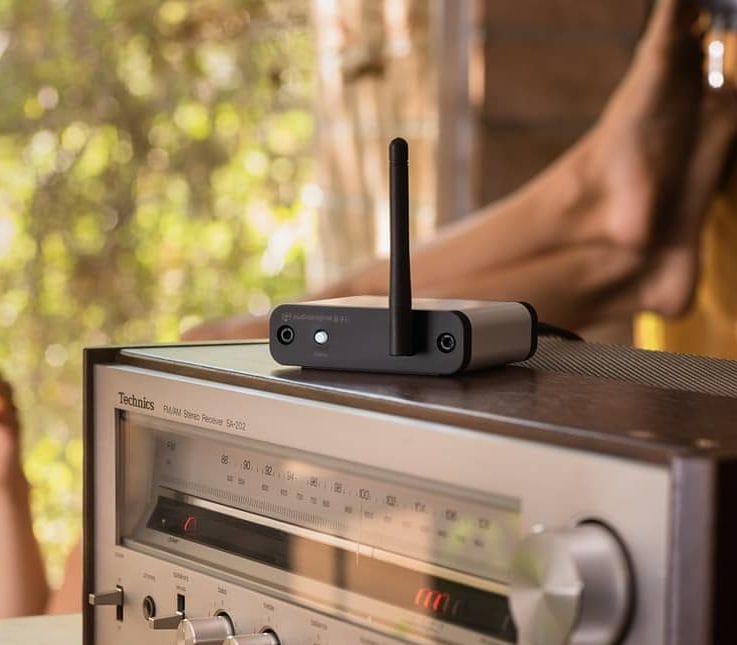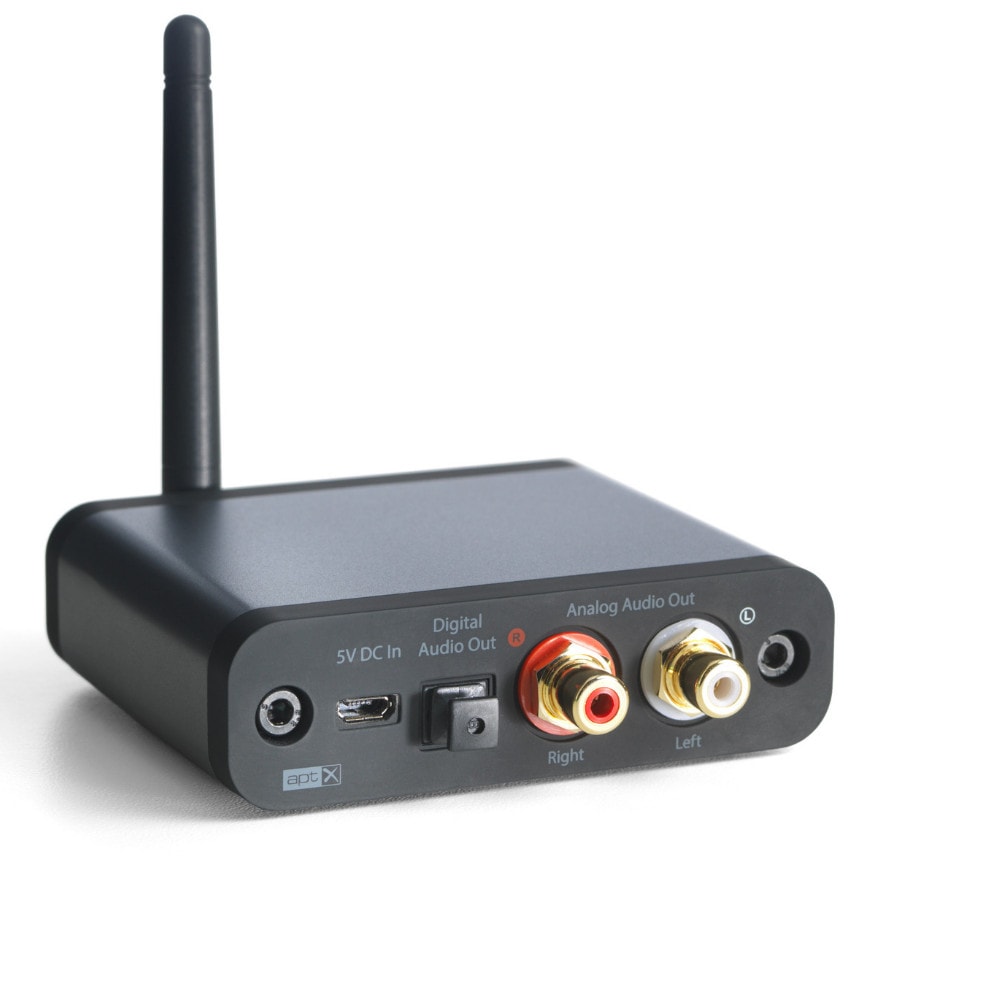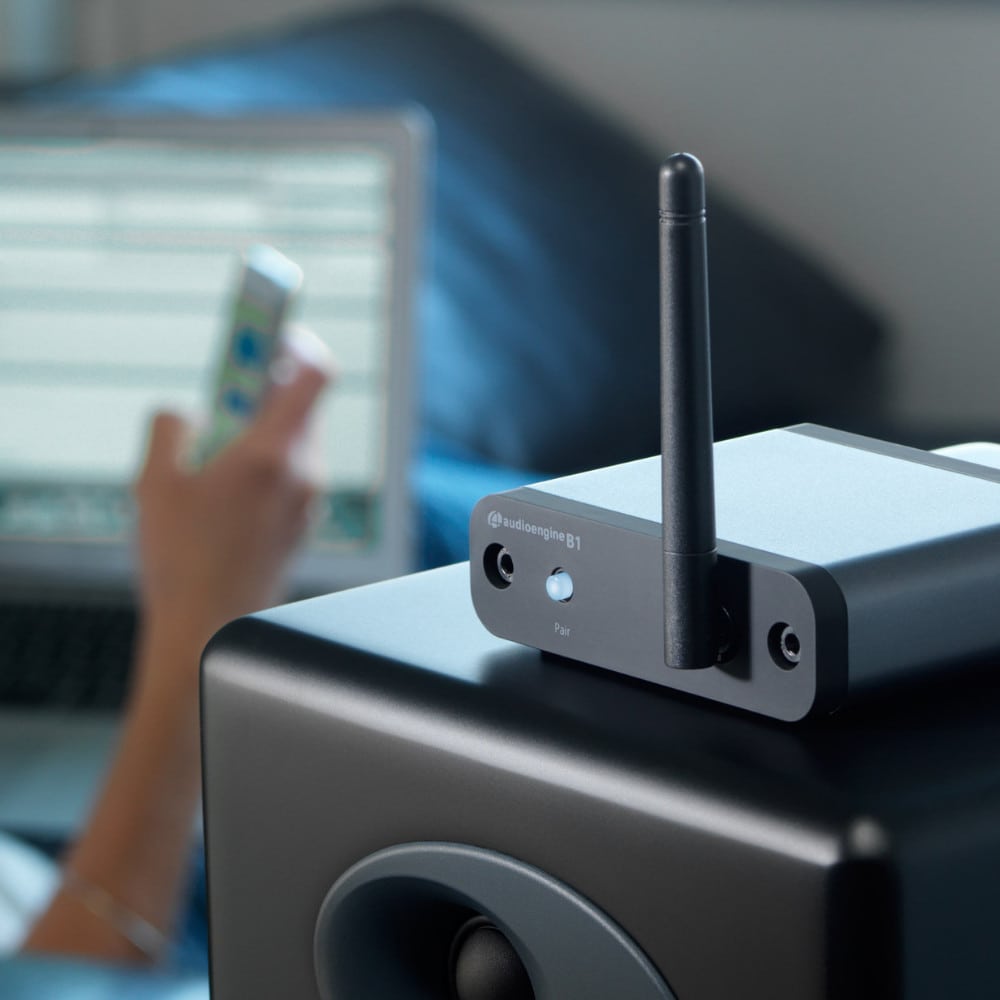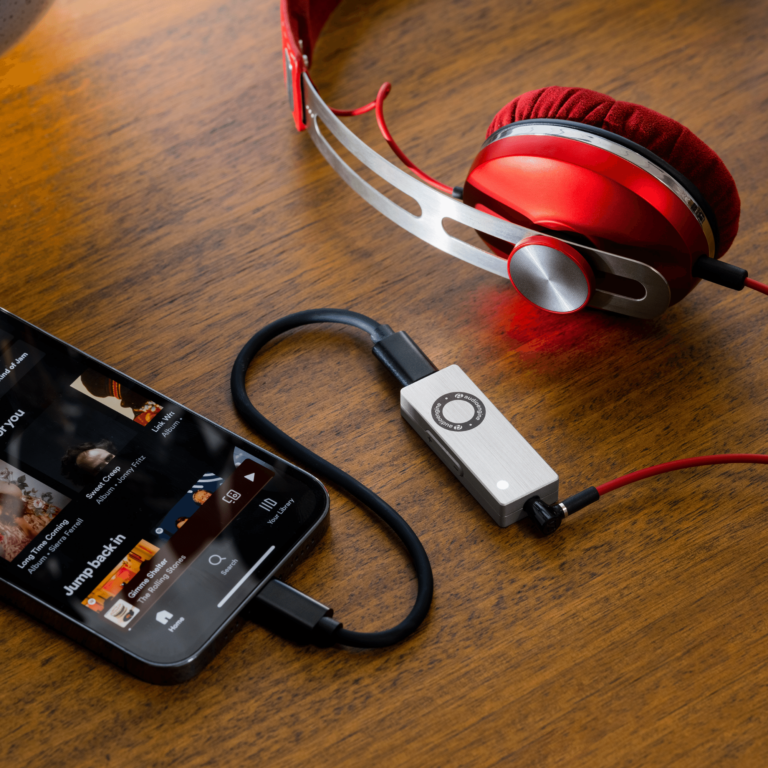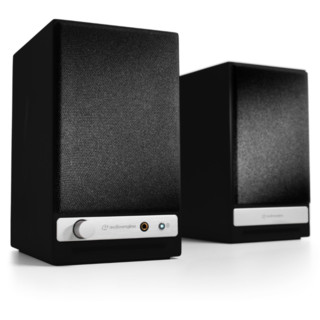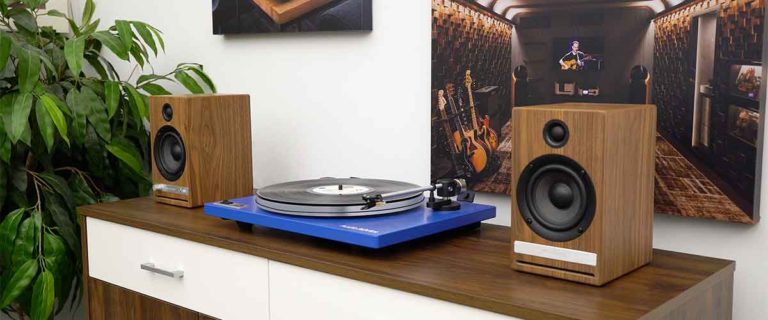The Audioengine brand, as a whole, is known widely for their professional speakers and audio equipment, so you’d expect pro-calibre quality in the B1 too, and it delivers. It’s a device aimed at two people: audiophiles who want the best analog audio treatment and top-notch compression codecs, and audio professionals. If you’re running a studio, you probably have studio monitor speakers, but if your clients want to quickly stream an audio example during a working session, having a high quality option that folds right into your pro setup (and doesn’t undercut the quality of your speakers) could be super-handy. Here’s how this thing breaks down.
Audioengine B1 Bluetooth Music Receiver
Lifewire / Jason Schneider
Design: Sleek, utilitarian, and substantial
The first thing you notice about this receiver is the visible and obvious antenna sticking out the front. This part of the build is there for a very functional purpose (we’ll get to that later), but it adds a distinctive aesthetic flair, because most Bluetooth receivers don’t have an antenna at all. Other than this, it’s pretty small and sleek.
Most of the chassis is brushed, slate grey metal. The front and back plates that contain all the I/O and controls are dark gray or straight black. The on/off button on the front doubles as the Blue LED indicator, and the AE logo is painted on in a soft white. This makes for a pretty futuristic look, more of a statement than the majority of the options in this category.
Durability and Build Quality: Solid and rugged, even the antenna
It’s weird to say about a Bluetooth receiver that will largely sit on a shelf for its lifetime, but we were very impressed with the build quality of the B1 when we unboxed it. Because most of the chassis is made of aluminum, it feels really solid with hardly any give. It weighs right around a pound, and that heftiness works to the device’s advantage because once you set it down on the firm rubber feet it stays in place.
The B1 gets top marks on build quality, a look and feel befitting its price.
Even the antenna is built of a thick, unbendable rubber material. The button is satisfyingly clicky, and the I/O hacks on the back felt perfectly stable, particularly with the high quality included cables. The B1 gets top marks on build quality, a look and feel befitting its price.
Setup Process and Connection Stability: Solid signal with impressive range
The Audioengine B1 appeared on our Bluetooth lists as soon as we put it in pairing mode, great to see from a device that costs this much. With Bluetooth 5.0, you’ll have the most modern protocol at your disposal, but what’s really interesting here is the inclusion of the antenna alongside what AE is calling “careful antenna tuning”. This means you’ll get an advertised 100 feet out of range out of the device.
While this might seem excessive (who has a 100 foot room?), what we found nice about this is that we could beam music from two rooms over through thick concrete walls on Bluetooth with no problem. This is virtually unheard of for basic Bluetooth connectivity, and it was really amazing how well it work. Needless to say, you won’t need to worry about dropouts with this signal strength.
I/O and Controls: Simple controls and well-appointed connection options
The controls on the device are pretty simple—literally one button on the front of the receiver. This is a welcome contrast to other premium options in the category, which tend to lean on bloated switch arrays and app connectivity.
The I/O available here is pretty solid, too. The B1 takes power via an included 5V micro USB input, and there’s the standard dual-color analog RCA jack on the back for transmitting audio to most household speakers. But they’ve also included a digital optical SPDIF output so you’ll be able to set this up with even your more advanced stereo receivers. This latter point will become particularly important when we get into sound quality, because it ensures that all the audio this device is supporting can be transmitted through the optimal output.
Read full article here.


